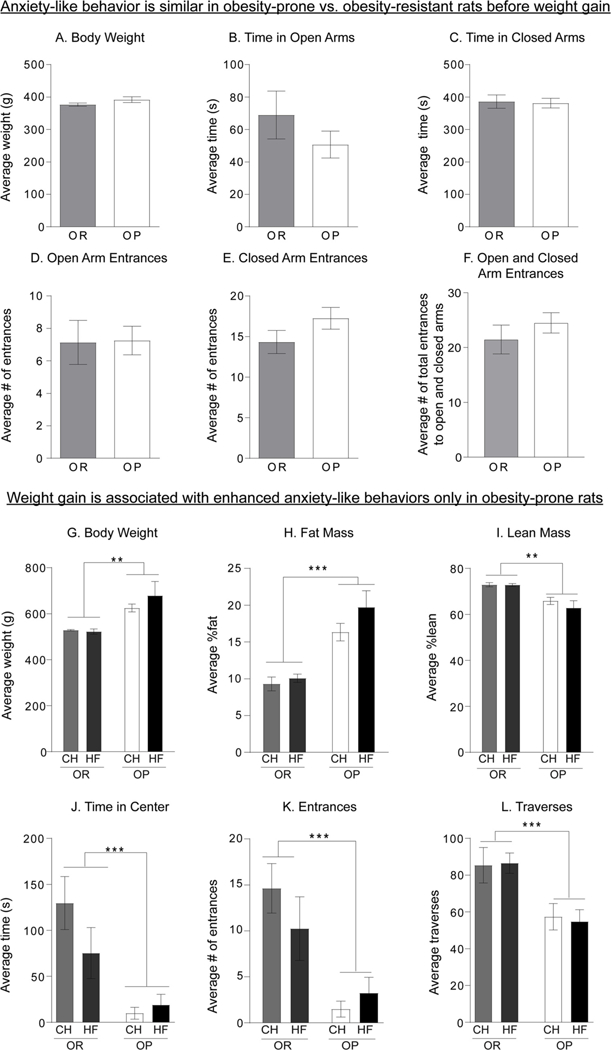Fig. 2.

Anxiety-like behaviors emerge with spontaneous weight gain in male obesityprone rats. A) Average weight at the time of elevated plus maze testing is similar between obesity-prone (OP) and obesity-resistant groups (OR). B–F) Measurements of anxietylike behavior in the elevated plus maze were similar in obesity-prone and obesity-resistant groups. G–I) Weight and adiposity in the same obesity-prone and obesity-resistant rats after 4 weeks of high-fat (HF) or regular chow (CH) diet. G–I) Obesity-prone rats were heavier, had more fat mass, and less lean mass than the obesity-resistant rats in both chow and highfat diet fed groups. J–L) Measurements of anxiety- like behaviors in the open field after 4 weeks of high-fat diet. Anxiety-like behavior was enhanced in obesity-prone vs. obesity-resistant rats following spontaneous weight gain chow or high-fat diet. Data are shown as mean ± SEM. * = p < 0.05, *** = p < 0.001.
